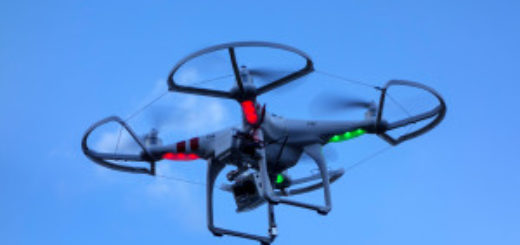Last week, General Stanley McChrystal, former Commander of JSOC and ISAF in Afghanistan, headlined a timely conference on the ‘Strategic Risks of Armed Drone Use’ hosted jointly by the APPG and RUSI. Other speakers were Harriet Harman, Chair of the JCHR, General Sir Graeme Lamb, former Director of Special Forces, and Air Marshall Greg Bagwell, Deputy Commander of Operations at RAF Command. The conference was co-chaired by APPG Chair David Davis and Professor Michael Clarke, Director of RUSI.
The expert panel was invited to consider the strategic risks of armed drone use, with a focus on use outside designated theatres of operations, in the light of the Raqqa Syria strike on 21st August, killing 2 British citizens. This ‘new departure’ and ‘counter-terrorism strategy’ has been the subject of significant push back this term as MPs – spearheaded by the Joint Committee of Human Rights – have questioned the legal basis, uncertain scope and lack of parliamentary approval. MPs are also considering response to a Letter Before Action. Until the conference, however, consideration of the strategic implications of this high-risk policy switch has been absent.
This is pertinent given Monday’s SDSR: the confirmed investment of 20 new ‘Protector’ armed drones (Predator B variant) ‘to enhance our…. global strike capability’ [SDSR 4.92]. The SDSR ‘made great play’ of increasing the UK’s armed drone capability, as Professor Clarke pointed out, and suggests the development of a policy for targeted killing outside approved warzones as a major plank of a new counter-terrorism ‘strategy,’ at odds with the current criminal justice approach.
The impending vote on military intervention in Syria was the inevitable backdrop. Given this, Clarke highlighted the imperative for clarity about the new counter-terrorism policy, and to distinguish the strategic risks of armed drone use in and outside approved warzones. He anticipated that strategic risks of using armed drones inside warzones may well be outweighed by tactical advantage; but that the strategic consequences of using armed drones outside warzones, as in the Khan drone strike, were potentially dire. Therefore, whilst it was entirely understandable to develop the capability for use in acknowledged warzones, HM Government should be very cautious in deciding whether or not to develop the ‘new departure’.
General McChrystal started by explaining the value of armed drones inside a warzone from an operational perspective. In Iraq, access to just one Predator for part of the day changed the way the General was able to operate. The ISR capabilities of drones, especially the full motion video, provided a pattern of life which brought the potential for increased precision, security and understanding. The General was able to send in 20 men, not 80, for operations and could carry out 5 raids in the same time it had taken to carry out one: the Predator – the ‘eye in the sky’ – revolutionised the way of operating. Similarly, an armed drone provides a low cost and risk capability for precision strikes when the conditions are right, and to do something high risk that might not otherwise be possible.
So what are the risks? The General explained that the strategic risks of drones are inherent in these unique capabilities, and that drones are not strategic platforms per se. He urged his audience to pay attention to the fact that by lowering the cost and risk of operations, increasing the potential for precision – and because ‘it doesn’t feel like war’ – you start to lower the threshold for decision-makers. In turn, this makes decision-makers less likely to consider the second and third order effects of armed drone use on (a) the target (b) collateral damage and (c) how people process that strike, both on the ground and elsewhere. In short, drones add significantly to military capabilities as one means to implement a coherent, long-term strategy but there are pitfalls that must be considered: cutting off the head of the snake will not solve the problem. The Q&A session and other speakers’ presentations were held under the Chatham House rule.
Members are invited to consider the following take-home messages from the conference:
- armed drones lower the threshold for intervention;
- armed drone capability must not be mistaken for a strategy;
- the outstanding contribution of UK Reapers is ISR capability;
- the strategic risks of armed drone use are significantly heightened outside approved warzones
It is hoped that the Secretary of Defence and Prime Minister will take the opportunity to clarify the legal and policy basis for the ‘new departure’ before seeking approval for further military intervention in Syria. As Chatham House has emphasised, this may strengthen the Government’s hand. The Government should also commit to full co-operation with the JCHR inquiry and assure the House that – if MPs vote in favour of intervention – no drone strike will take place outside Iraq or Syria without informed parliamentary debate. The new ‘counter-terrorism strategy’ marked by the Khan drone strike is distinct from the vote – and has not been approved.
A debate ‘Rules of Engagement and the Use of Armed Drones’ is listed for 9.30am Westminster Hall tomorrow, 1 December. 5 APPG members and staff will be visiting RAF Waddington on 2 December.



The problem with ‘no drone strike will take place outside the coalition offensive’ is that RPAS are clearly a great asset in support of, and integrated with Special Forces. So far as I understand it Special Forces Ops are still wholly within the control of the Executive and no Government feels an obligation to comment on Special Forces Operations. Up to now I’ve seen nothing posted on this that recognises the SF dimension of the use of armed Drones – though McCrystal was clearly hinting at it.
I have tweaked part of the blog and am keen to continue this conversation. Please can you email me on anna.thomas@parliament.uk